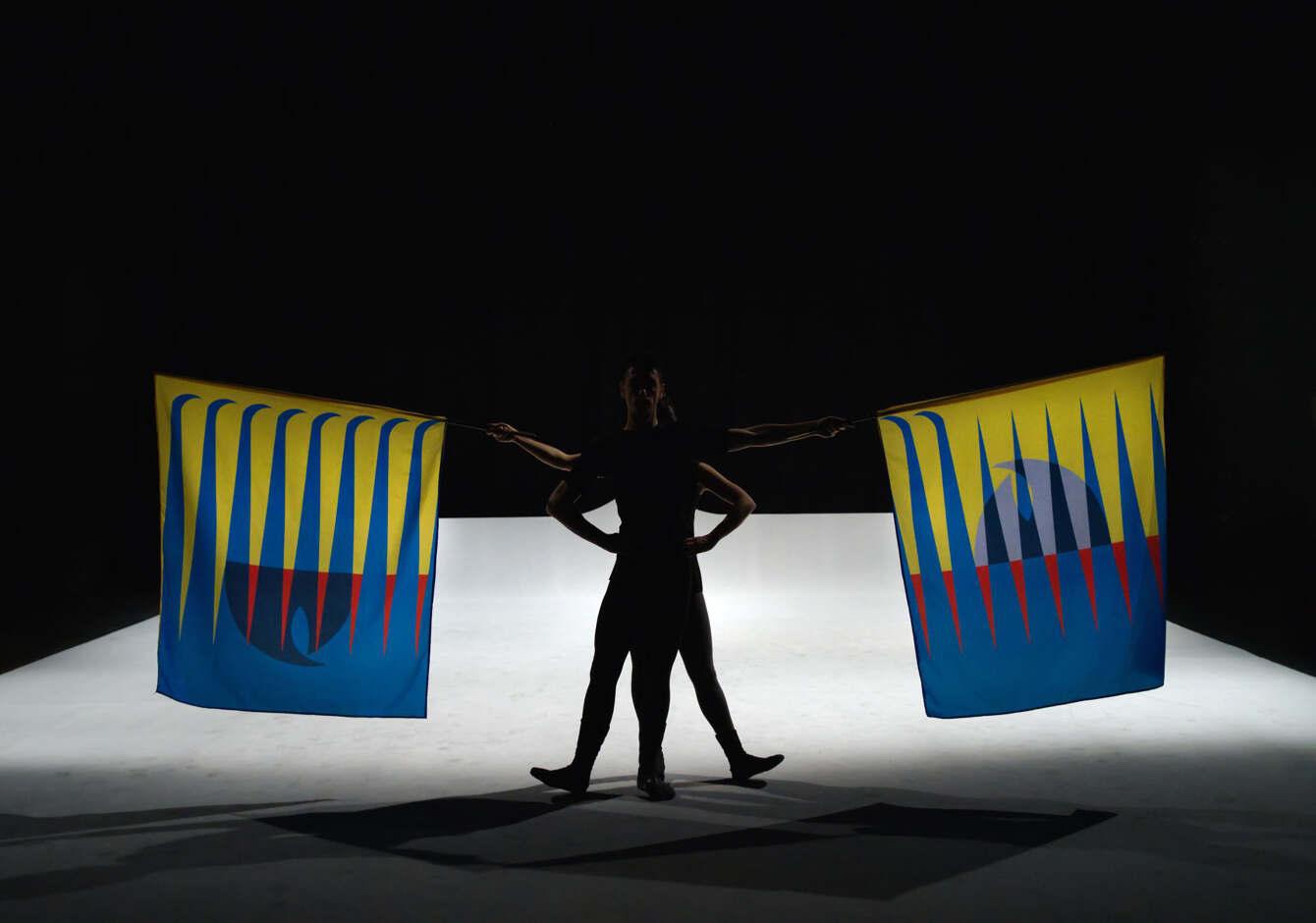Words by Giordana Patumi.
Review of ARA! ARA! choreographed and performed by Ginevra Panzetti and Enrico Ticconi at Teatro Morlacchi of Perugia.
Ginevra Panzetti and Enrico Ticconi, based in Berlin and Torino, have been working as a duo since 2008. Their artistic research interlaces dance, performance and visual art. Deepening themes related to the historical union between communication, violence and power, they draw on ancient imaginaries, creating hybrid figures or images between history and contemporaneity. Both graduated from the Academy of Fine Arts in Rome and attended Stoà , School for rhythmic movement and philosophy in Cesena, led by Claudia Castellucci.
They gained international recognition with their choreographic work HARLEKING (2018) that, among some of the most important international festivals, has been presented at the European platform Aerowaves Twenty 19, the New Italian Dance (NID) Platform and by Tanzplatform Deutschland 2020. In 2021 they were commissioned to make a piece about the American choreographer Lucinda Childs.
Ginevra Panzetti and Enrico Ticconi’s recent artistic research investigates the symbolic power of the flag and took shape through the realisation of a dypthic composed by two choreographic works (AeReA / 2019 and ARA! ARA! / 2021) and was concluded with a filmic work (Silver Veiled / 2021). With AeReA they won the first edition of Premio Hermès Danza Triennale Milano, while ARA! ARA! has been supported by the Fondation d’entreprise Hermès within the framework of the New Settings Program. The filmic work Silver Veiled was commissioned by the Dublin Dance Festival and will be presented at the Torino Film Festival.
ARA! ARA! is the definition of a symbol, the symbol of a rising power that chooses a bird to represent itself. Not a majestic and fearsome bird of prey like the eagle, an animal often used as a heraldic symbol of power. On the contrary, a bird to which we recognise as a cheerful and lively character, becoming, according to a popular western view, an exotic icon: the macaw.
In the circus the macaw was introduced for its acrobatic abilities which, together with the bright colours of its plumage and its ability to repeat sounds and words by imitation, made it a perfect captive entertainment animal.
ARA! ARA! represents a seductive power because of its harmless and festive appearance that, like the bird, imitates and repeats, bringing back models of the past, ignoring contents and effects.
The second part of a diptych that began with AeReA, ARA! ARA! continues to investigate the symbolic power of the flag, drawing on the folkloric tradition of flag-waving. Present in both titles, the word ‘Ara’ lets a second meaning emerge that alludes to the ancient place deputed to sacrifice. Here it is understood as a mechanism generating death, inflicted as a gift to those who were recognised as having the highest power.
Choreographers Ginevra Panzetti and Enrico Ticconi have been working for many years on a cross-cutting critique of the notions of power, violence and language. In ARA! ARA! the choreographers Panzetti and Ticconi are interested in an eminently symbolic object of the exercise of state power: the flag. This new work uses the flag to highlight its representation as a political machine dedicated to heraldry, which has a codified and highly significant vocabulary. The parrot Ara, the hero of this play, is capable, a priori in all innocence, of imitating, parodying, counterfeiting the human voice… and thus its speeches. A clownish figure, he reveals the contradictions inherent in the great political theatre of nations and their actors.
The flag is one of the objects probably most loaded with references to power, and despite the fact that it has been widely explored in all territories of contemporary art, it still seems relevant to us to reflect on its symbolic substance. I find its extraordinary strength in the contradiction of embodying an inclusive sense of identity and community and at the same time clearly identifying values of separation and distinction. This contradiction, which is perhaps even more graspable in the folk tradition of flag waving found in Italy and other European countries, has been an essential reference in the development of their research. This practice has its origins in the battlefields of antiquity, when opposing troops used colours and flag waving to communicate from a distance. Over time, flag waving became increasingly complex until it became a codified language, so that only certain designated divisions could be assigned with the task. In the medieval tradition, flag wavers became primarily a choreographic medium for the majestic, but also festive expression of parades, processions and games.
As slipping out of the cloth of constantly fluttering flags, heraldic symbols take form and weight. Chimerical beings and oneiric figures appear, like leafing through an armorial or medieval bestiary. They seem to tell us stories of conflicts which took place in the well delimited perimeter of an emblematic battlefield. In the form of vivid colors and fantastic beasts, those emblems hint at political tensions, expressions of belonging, dominance and power.
ARA! ARA! is the designation of a symbol. The symbol of a rising power that chooses a bird to represent itself. Not a majestic and fearsome raptor like the eagle, an animal often used as a heraldic symbol of power. On the contrary, a bird that communicates fun and quietness by becoming, according to a popular western look, an exotic icon: the parrot ARA. It was introduced to the circus for its acrobatic abilities which, together with the bright colours of its plumage and the ability to repeat sounds and words by imitation, made it a perfect animal for entertainment in captivity. ARA! ARA! represents a seductive power for its friendly and festive appearance that, like the bird, imitates and repeats, bringing back patterns from the past, ignoring contents and effects.
